This is my travel diary of my trip to Egypt. It contains in detail my memories of what I did and saw.
Sunday October 25, 2015
Egypt: Day 4, Part 4 – Saqqara
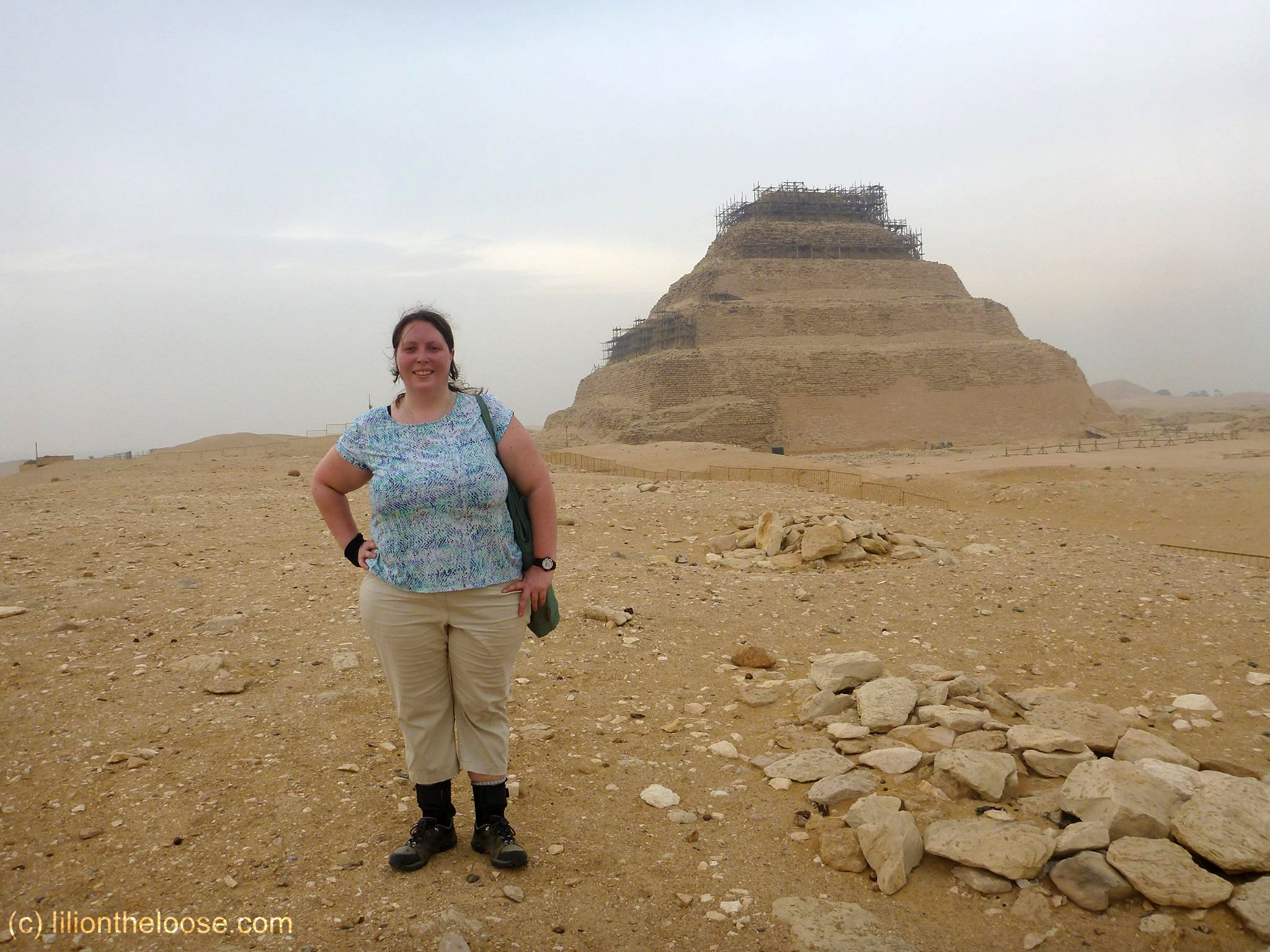
Step Pyramid of Djoser at Saqqara.
As we pulled up to the complex at Saqqara it started to rain. I realized I didn’t want to walk around with my big heavy bag any longer and so took out just some of the essentials into a sack. (This would be a big mistake.) Upon stepping out I found the rain to be mostly just sprinkles, and it felt great, so I left my rain poncho in the car.
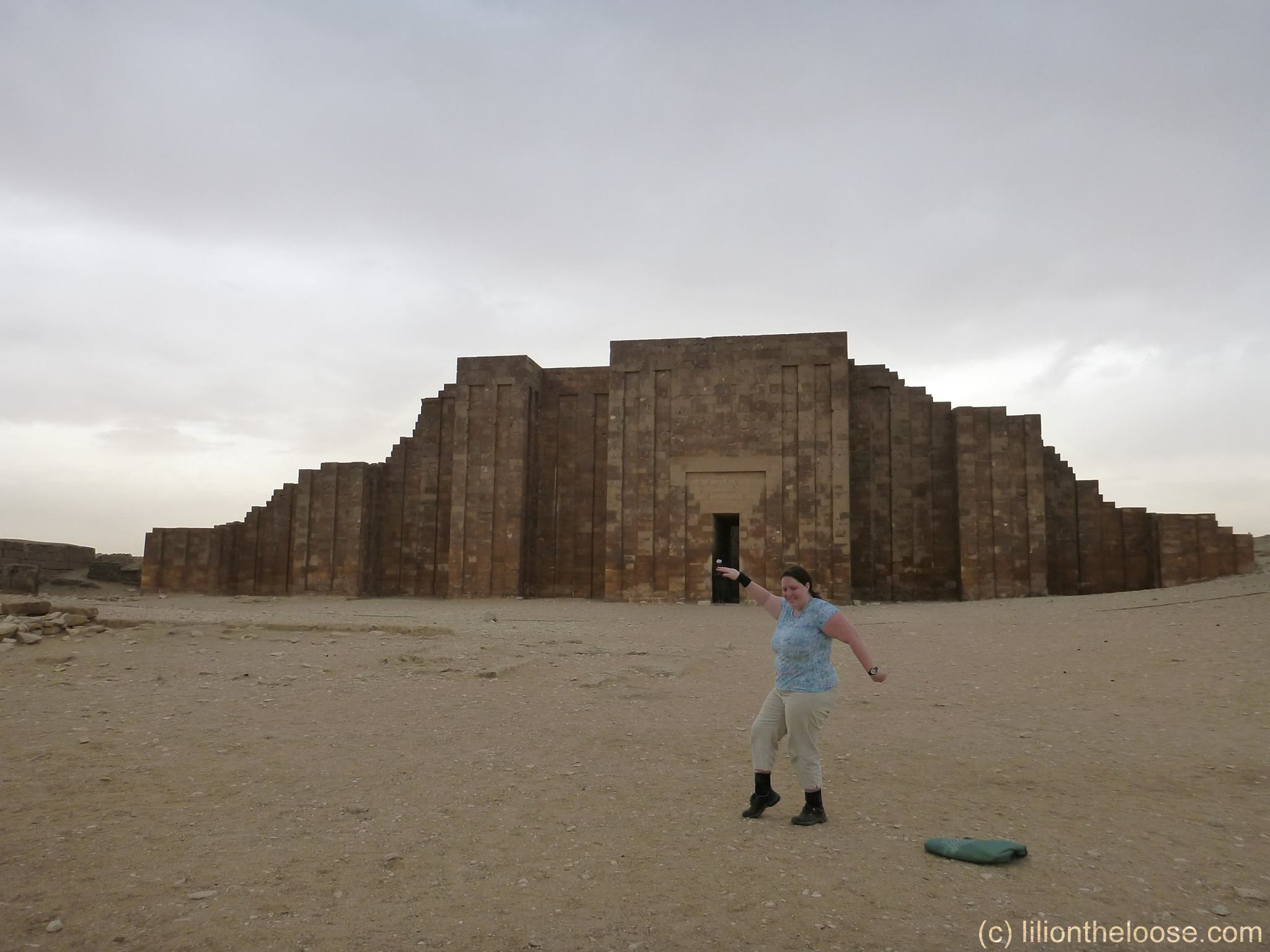
My “Walk Like an Egyptian” attempt.
We took a moment to have a little photoshoot in front of the entrance to the funerary complex of Djoser. Upon entering I found myself in a narrow colonnade. What is interesting is that most of the columns are not fee standing, but instead connected to the walls. At this period in ancient Egyptian architecture they hadn’t mastered columns yet. Mohsen helped shoo away a tout and then take some photos of me. This was a real treat as I rarely have photos of myself when I travel, as I can never find someone competent to do so. (My mother on numerous trips would take photos with my head not in the frame…thanks mom!)

The empty colonnade.
After passing through the colonnade I entered the Great Court, which is enclosed with high walls all around and the Step Pyramid gracing the north side. I was once again struck by how few people were here. I counted only a handful of other tourists here, including the female guide and her charge that I had seen in Memphis.

Looking back on the colonnade entrance.
Looking around I remember reading about a new museum dedicated to Imhotep at Saqqara’s entrance. Thinking it was nearby I asked Mohsen about it and he was sure there wasn’t a museum. I pressed him further saying I knew there was one (as it was printed on the ticket) and hoped to see it, and Mohsen said he’d ask around before we left. I was a bit surprised, as Egyptian Sidekicks’ website was very well informed so I was confused as to how Mohsen didn’t know of this museum…and that is when it hit me. The amazing website did not equal that the Sidekicks had read (& memorized) the information. Nor did the shiny website mean that Mohsen and the other guides were going to the same places over and over. I had just assumed they were a busy and successful outfit that went to these places often and could spout off at least some general information.
My fears were confirmed when I asked Mohsen if the Step Pyramid was older than the Bent or Red pyramids we had seen earlier. “No, those we saw earlier were the first ones ever.” He replied. Even though I knew Djoser and his Step Pyramid was an earlier Pharaoh than Sneferu’s pyramids at Meidum and Dahshur. Although I knew Mohsen was wrong, I didn’t bother correcting him for two reasons. Firstly, I was happy I remembered that bit of trivia myself. And secondly, I felt for the guy. I know I personally couldn’t explain in detail all the various details on the founding of America (let alone any real history on Colorado) and that is just over two hundred years of history. So how could I expect my Sidekick to remember THOUSANDS of years of history, when this wasn’t his field of study? So instead I just admire the Step Pyramid as we walked around.
Mohsen guided me up some steps to the Token Palace, where both Moshen and I admired the uraeus (cobra) that lined the top. Throughout Saqqara you’d see deep pits that Mohsen remarked were for the never ending digs at the site, but that nothing of real consequence had been found in recent memory. He also pointed out that after the revolution the majority of work stopped. In the distance I could see the pyramids of Dahshur where we had started our morning.
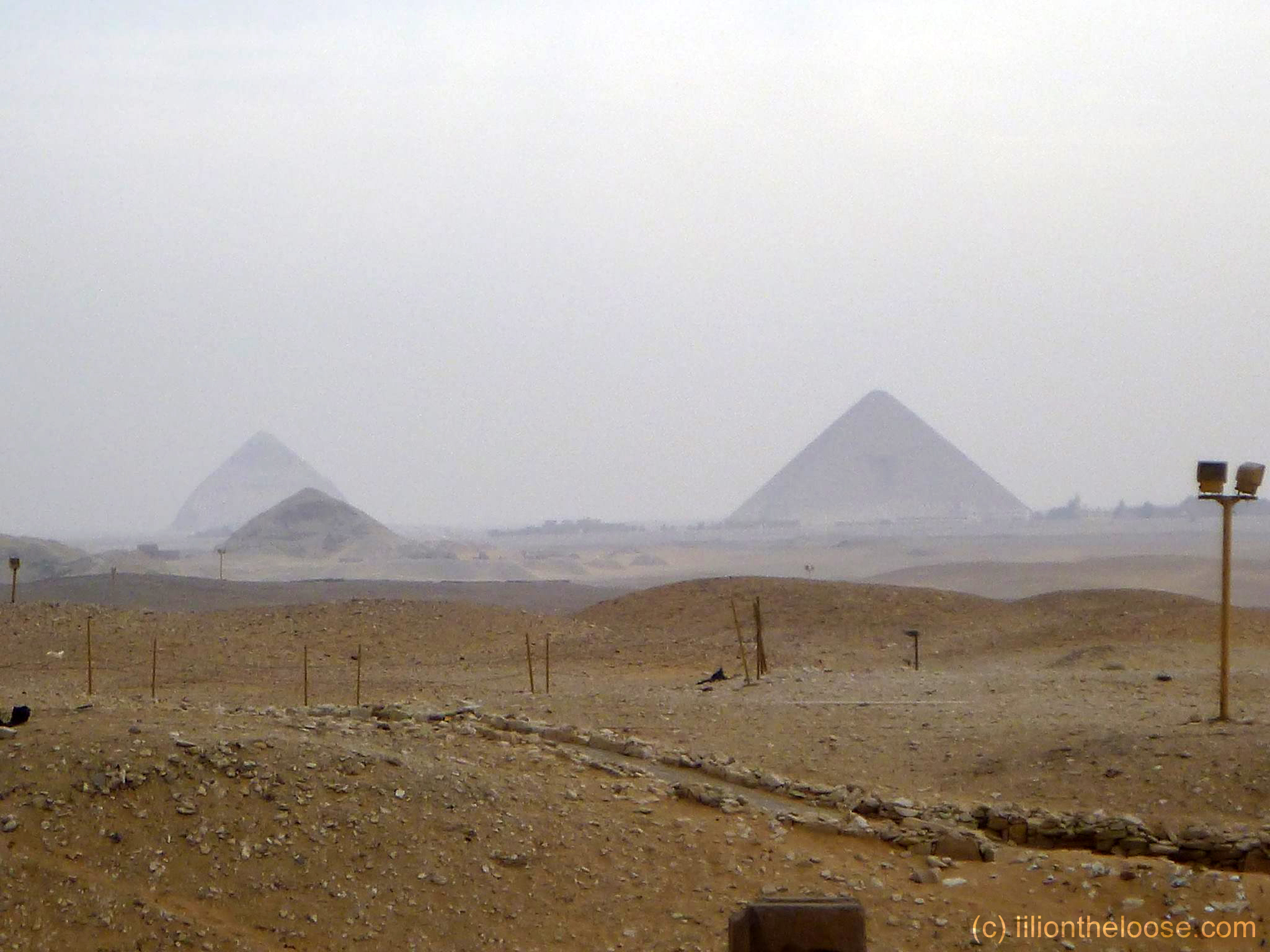
It seemed like it was long ago that I was in the Red Pyramid, but it was only that morning!
Once past the huge pit we saw many idle horses, donkeys, and camels. I had dreamed of riding a horse in the desert (like Hidalgo) and made a mental note to ask Mohsen later about riding. (Turns out Mohsen doesn’t like horses.) We then walked over a hill and down it (well, I kind of just raced down I was so excited.) I could see some mastaba tombs to my left and started walking that way. Every single one had a written label on a firmly locked door. Some other tourists were attempting to get into the first three or so tombs. I was curious to go inside, but knowing I’d have to pay the caretaker even if the tomb was a dud I figured if Mohsen was skipping them, they weren’t worth my time.
After we got past that small group of people (group is a generous term) another caretaker stopped us and invited us into the tomb of Unas-Ankh a prince of the 5th dynasty. It was quite dark, and when Mohsen tried to use his phone as a light a darken room the caretaker chastised him. While there was some natural light in one of the rooms but due to the weather there wasn’t much sun to begin with, so it was very hard to see anything. The caretaker started talking to Mohsen and motioning to various hard-to-see carvings. The most I could make out was a man and a cow along the center wall. (Ironically I found out later that a model of this exact tomb is at the Chicago Field Museum. I saw this when I visited Chicago to see the “Tutankhamun and the Golden Age of the Pharaohs” exhibit!)
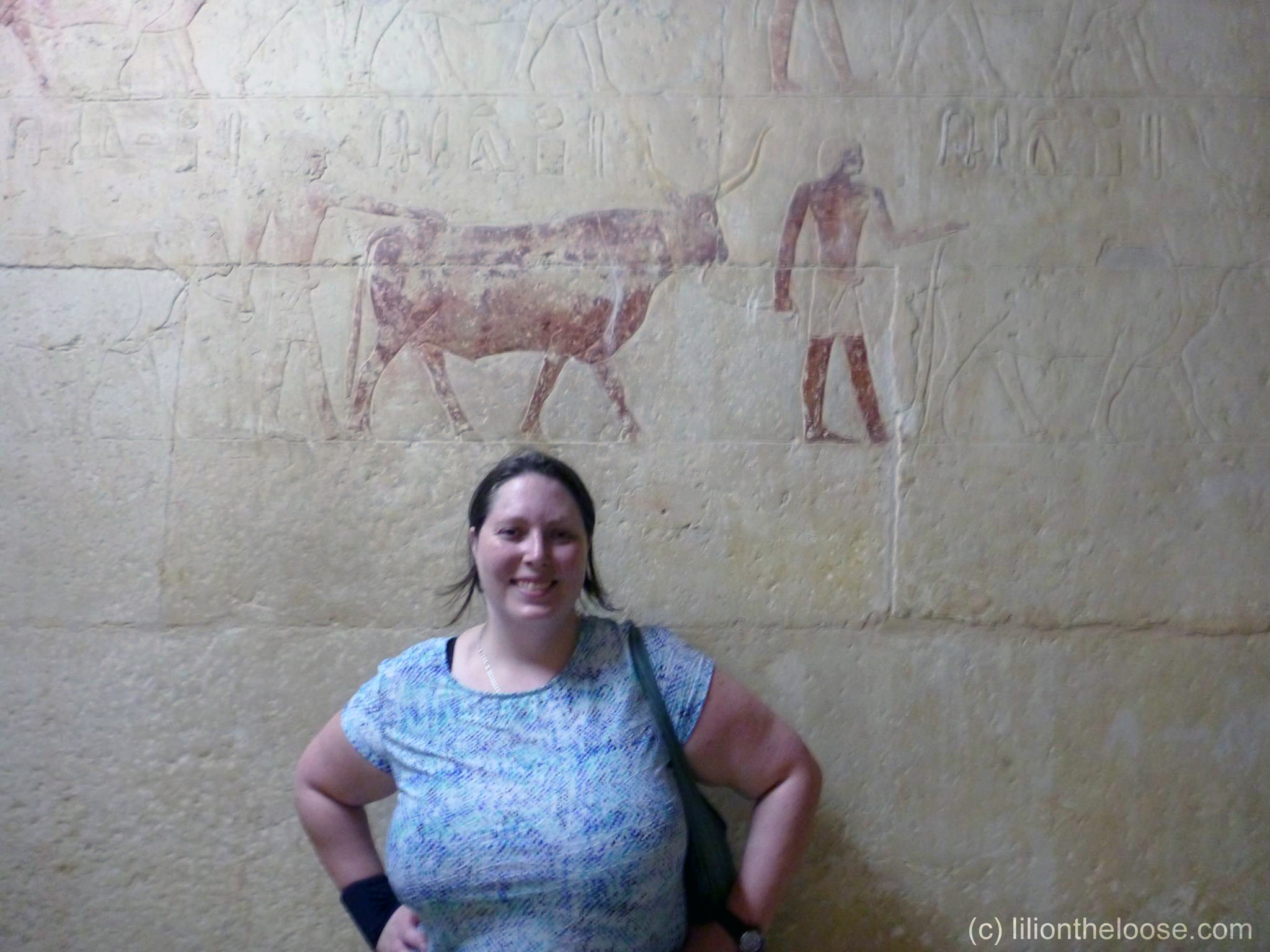
Inside Prince Unas-Ankh’s tomb.
I was too excited and freaking out in my mind. “OMG ACTUAL EGYPTIAN PAINT! I’M IN A TOMB! SWEET!” Was all I could think as the guard took my photo. He started pointing to other things, but neither I or Mohsen could see it. We had been in the tomb probably less than 3 minutes, and Mohsen waved off the caretaker with what I assumed to him saying that it was just too dark and not worth any tip. So when Mohsen started moving out, I figured we were heading to bigger and better tombs. But then Mohsen confessed, “I hate tombs. Who’d want to see these things?” (Maybe….this girl?)
And that was when I wished I had studied up more on Saqqara. It was one of the only places I didn’t read up on fully. I tried, but there were just so many possible tombs, and without a map to discern where they were located I couldn’t keep them strait. I had made the assumption that whatever guide (or sidekick) I chose would have been to Saqqara enough times to recommend the best tombs to me. And so didn’t study as hard as I normally would have. And now here I was at Saqqara, home of dozens of tombs from all different periods of Egypt’s history…blind and without any information (as I had left my guidebook in the car!)
We wandered around the southern area of Saqqara before one of the many locals popped up and started motioning us to follow him. Mohsen said the guy wanted to show us something interesting, and Mohsen asked if I had a few EGP on me. I nodded and we set off.
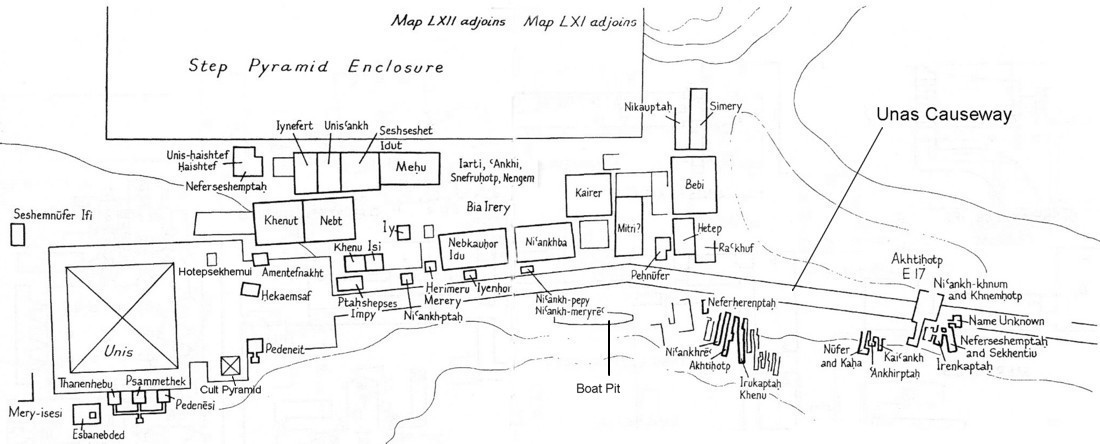
Best map I could find of these Unas causeway tombs. Source
The guy led us to some tombs exposed to the elements…with amazing carvings! I saw my first false door at Khenu’s mastaba. I had never seen such deep hieroglyphics and was pleased to see that within the carvings themselves details were also carved. (Like whiskers on the rabbit in Unas’s cartouche.) I started taking photos of the many false doors and carvings that I could see, bobbing in and out of the exposed tombs. I noticed that Mohsen was quite bored as he wearily watched me running about. While there I saw the ruins of Isi, Iy, & Herimeru’s tombs. Two of which were underground. I went into the first one and had a nice photo op. But the second one after I ducked in I could heal the squealing of either mice or bats and so I darted out so quickly Mohsen laughed at me.
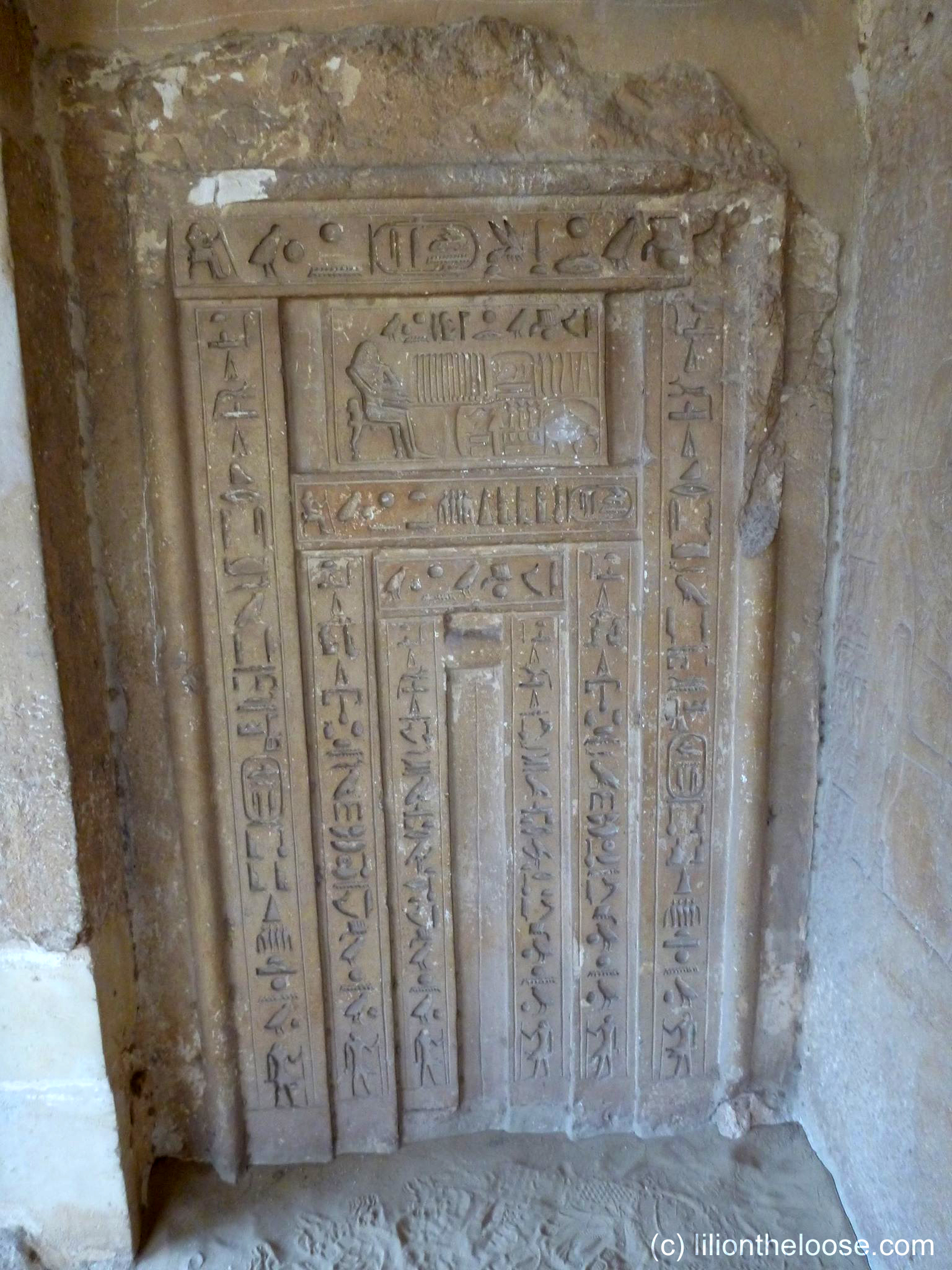
My first false door. Khenu’s mastaba
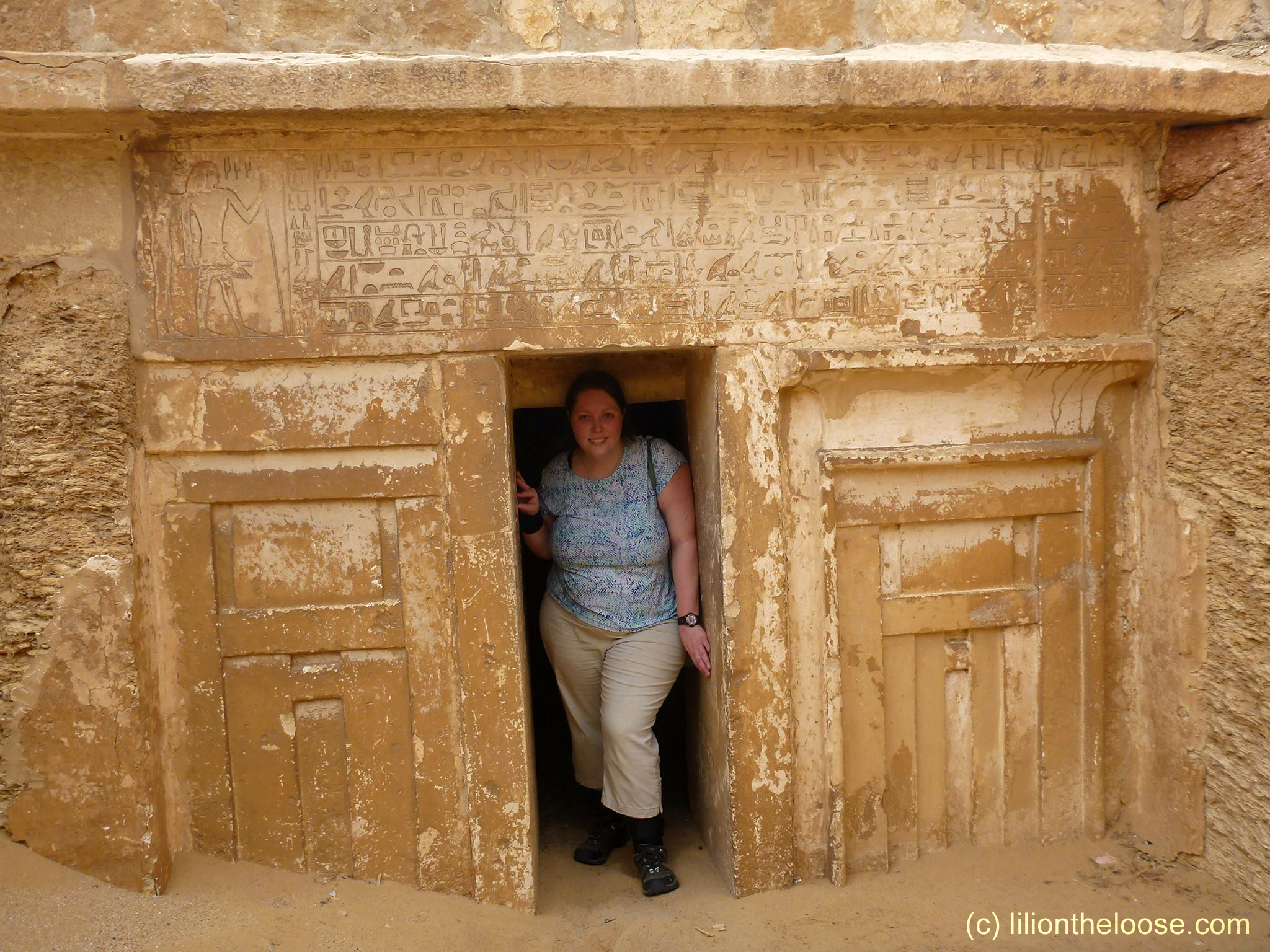
Iy’s Tomb
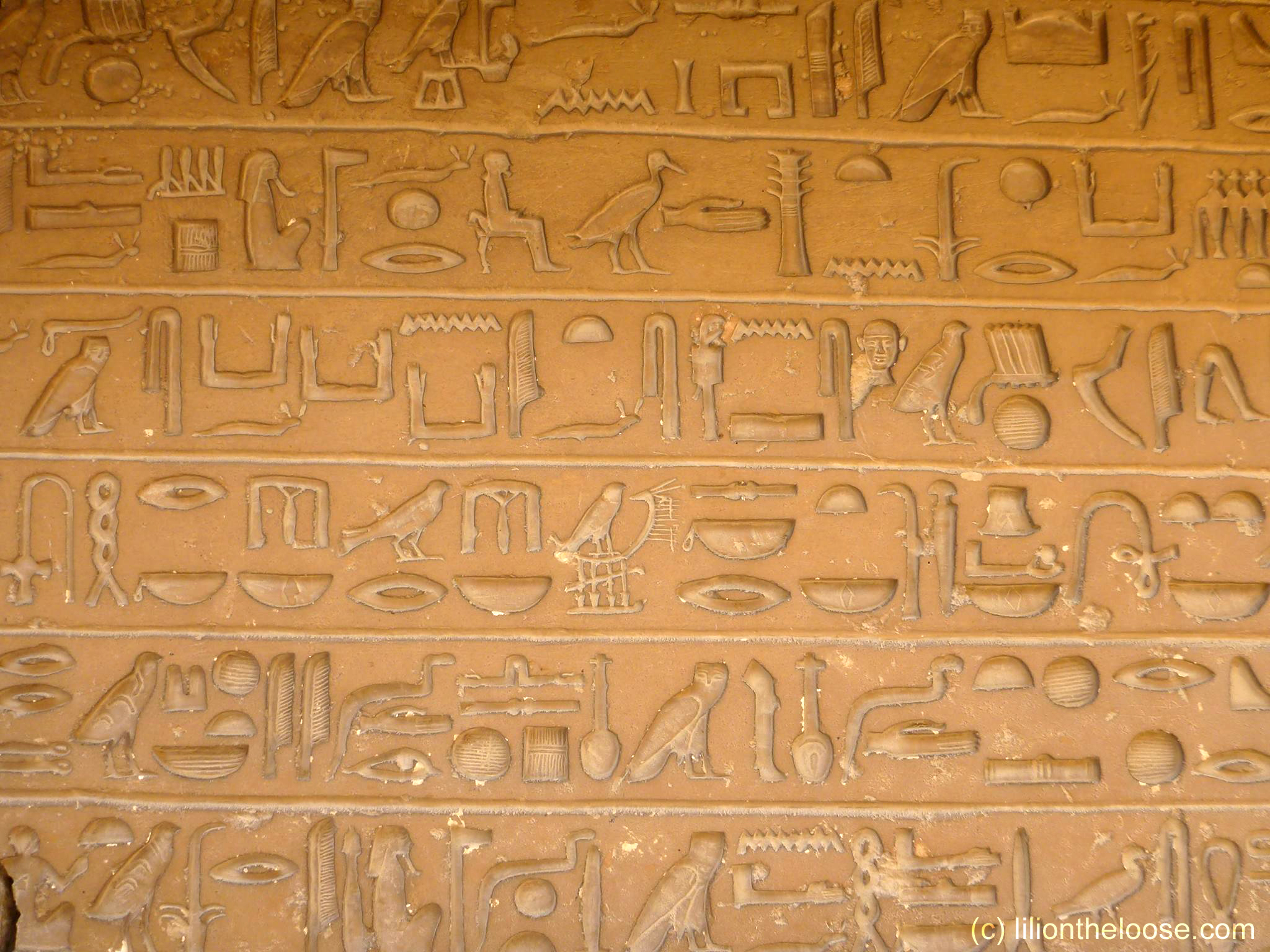
Details from the tomb of Herimeru
Our newfound guide then lead us over to Unas’s Pyramid, and removed the barb wire and said we could go down into the Pyramid. I took one look at the rickety stairs, and knew two things. 1. I had no flashlight with me and 2. There was no way in hell I was going to use “stairs” like that again. Once was enough at the Red Pyramid. I also declined a photo op at the entrance to the pyramid, as I simply just didn’t want to pay for the privilege and I knew I didn’t have a ton of small change to tip with. And then it hit me. I forgot my wallet in the car!!! I stupidly had thought “What on earth would I buy here anyway?” and left it in the car with my main bag. I did have a small emergency stash of larger bills and USD in my wrist wallet, but no one here would be able to make change.
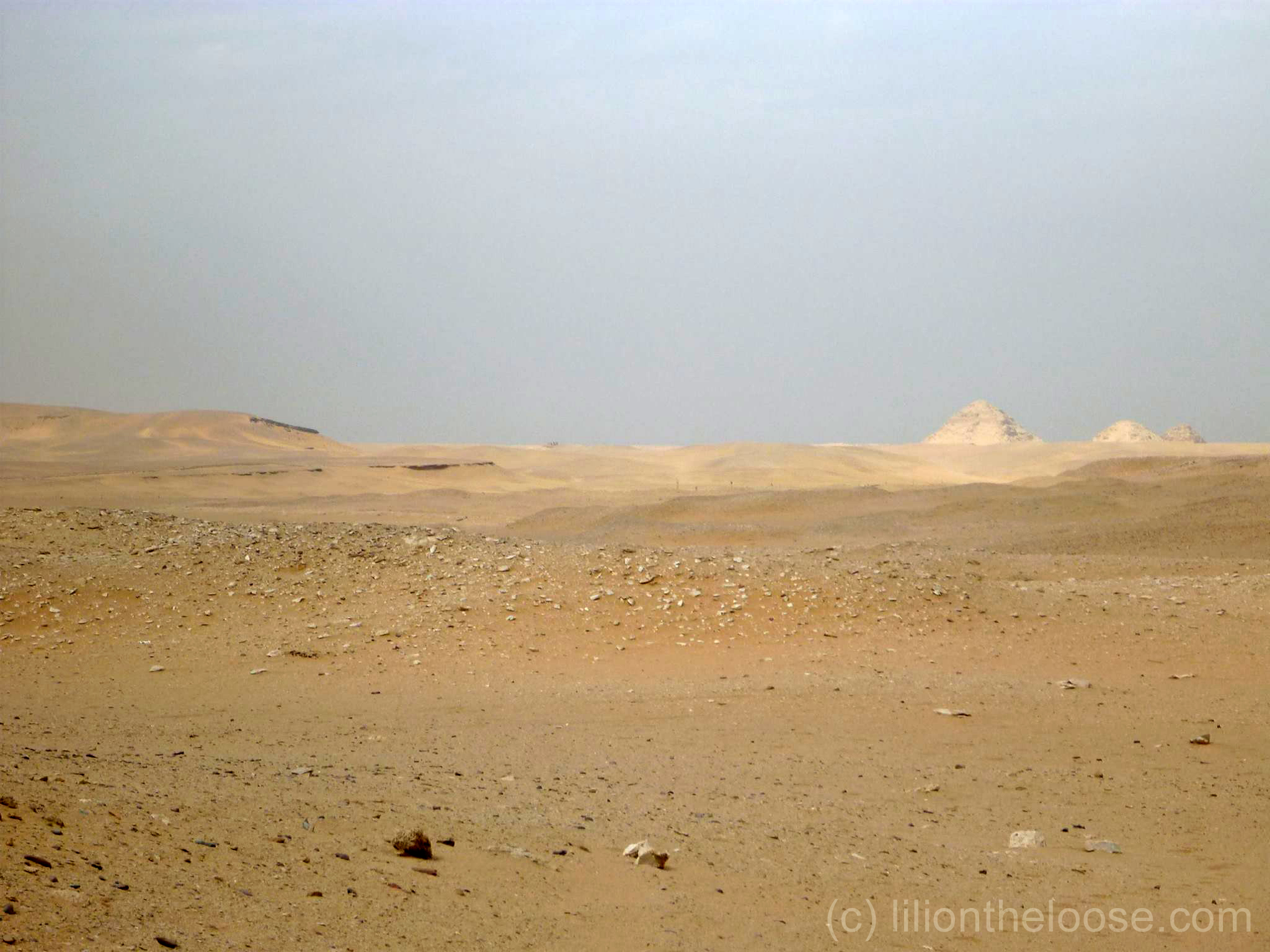
Walking alone in the desert near Saqqara.
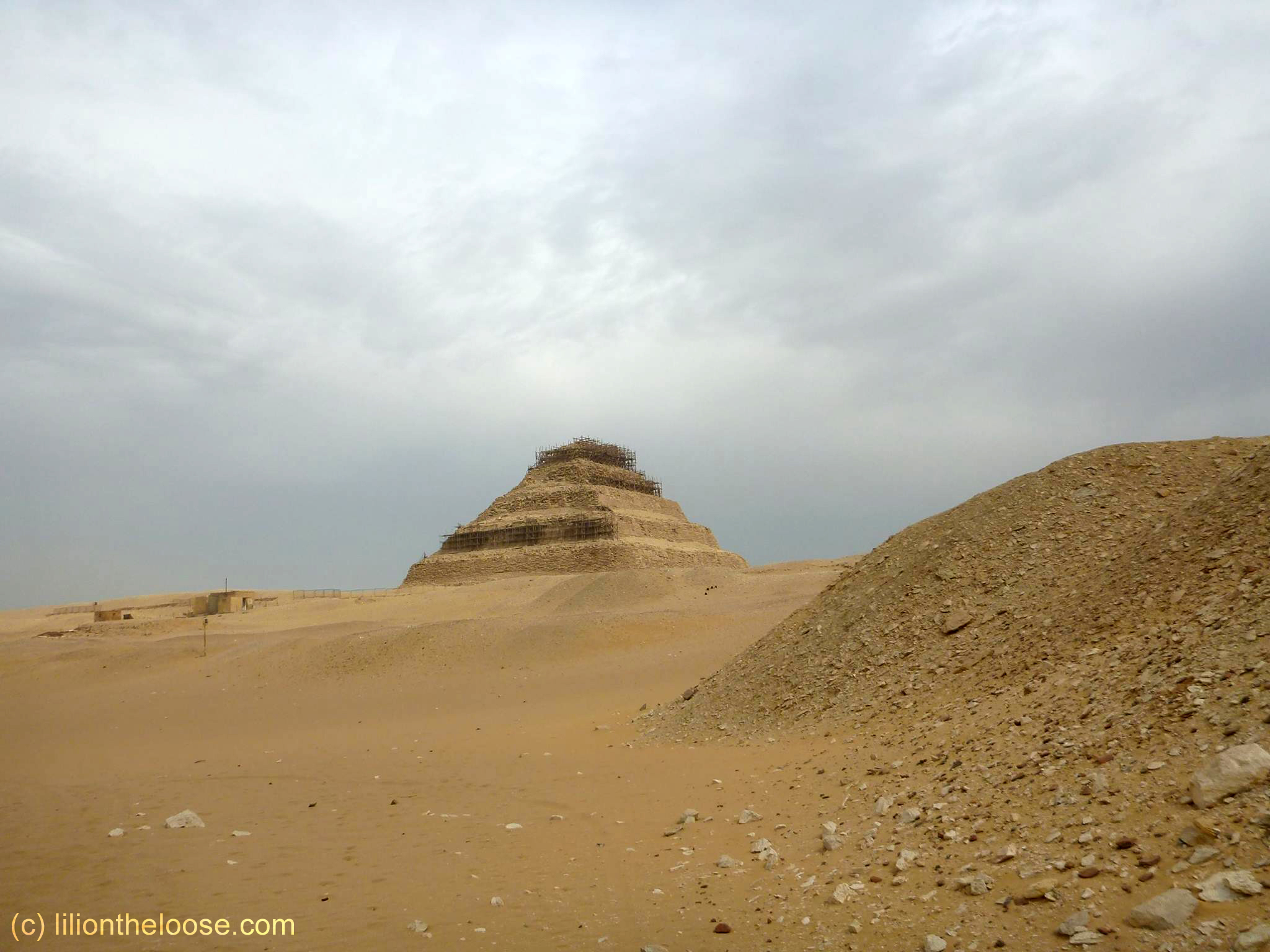
Step Pyramid of Saqqara from the western desert.
But with both Mohsen and our guide pressing on to whatever else he was going to show us, I didn’t have time to explain to Mohsen…that I didn’t actually have tip for this guy! And fast moving were they both. We walked down into the desert. I could see the vastness of the desert in front of us. We walked past the signs saying DO NOT ENTER and continued directly into the desert. I felt like we walked for ages, with nothing around us but sand. I was tired, and almost out of water. On more than one occasion I wished I had money so Moshen could go rent me a camel. After walking ages, out adopted guide ran to go find the caretaker of the tomb he wanted to show us.
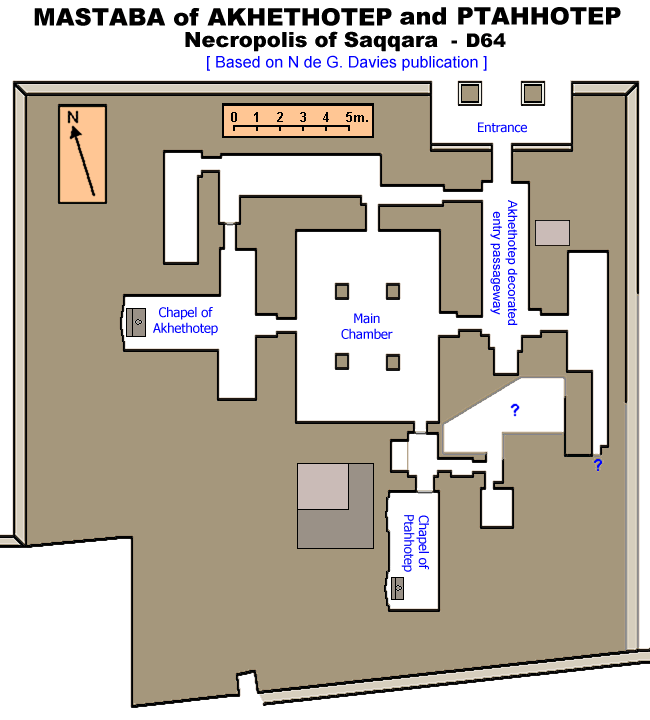
Layout of the Mastaba. Source
Our guide must have sat in the little hut for a rest, so instead we were joined by the caretaker of the tomb. We then walked inside of the dual Mastaba of Akhet-hotep and his son Ptah-hotep, both of which were high officials in the 5th dynasty as Viziers. This is exactly the type of tomb I was expecting to see. Numerous rooms! Tons of amazing carvings. And this one is known for the exquisite paint still found on the walls. The caretaker would help point out different things, such as scenes depicting offerings, or specific types of birds. And the caretaker encouraged taking photos of myself and the amazing decorations.
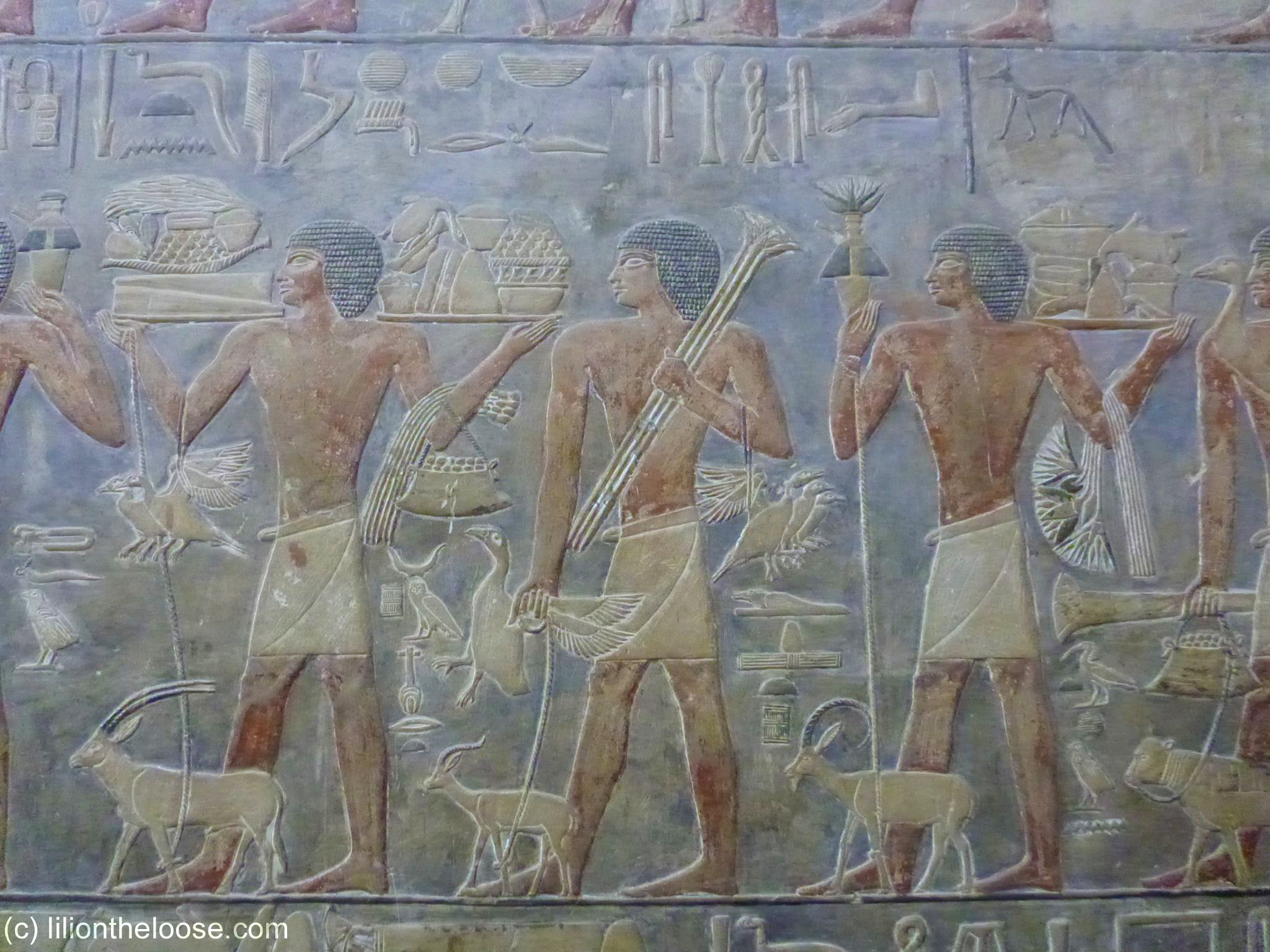
Amazing paint on the tomb of Ptah-hotep
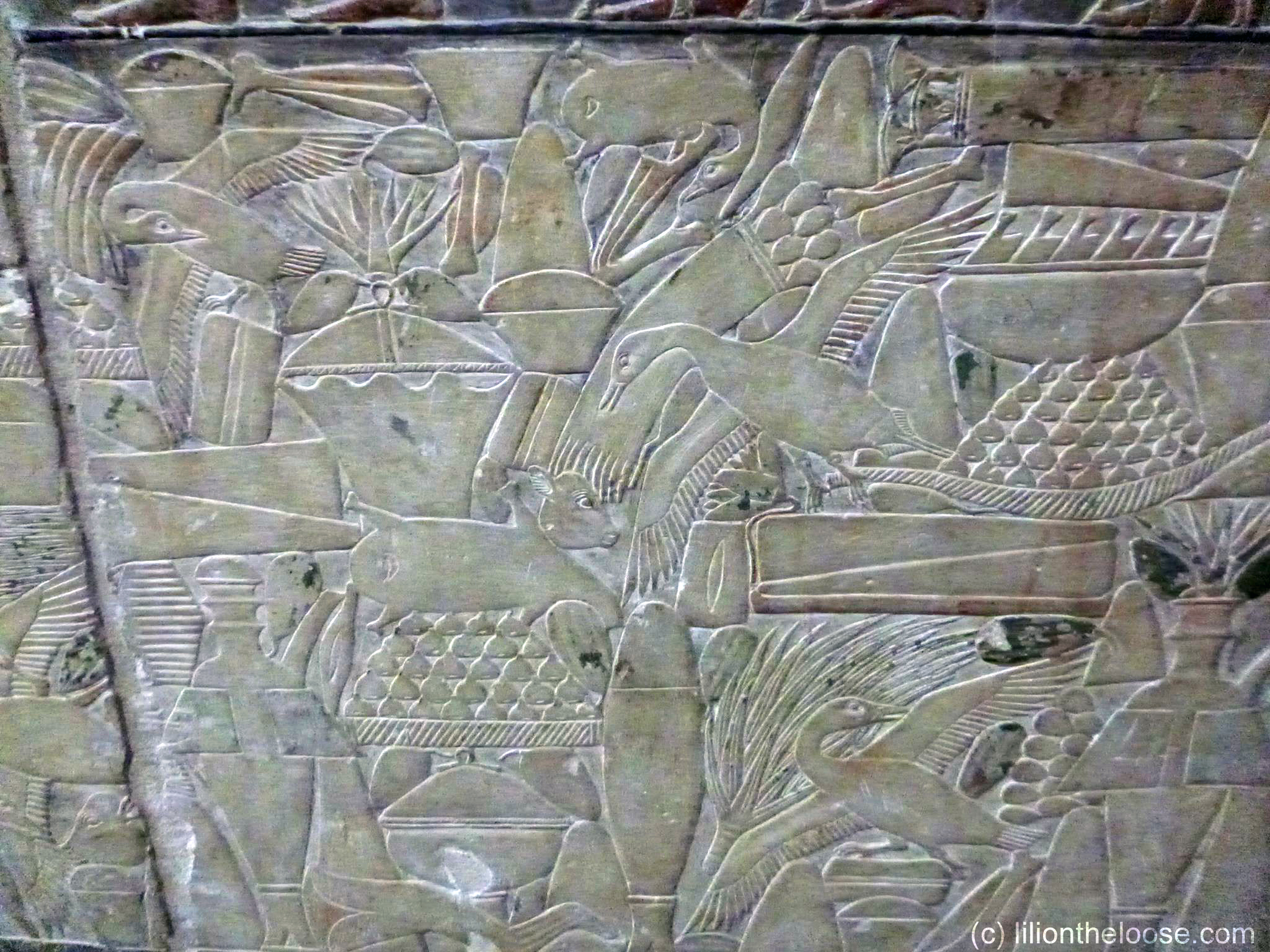
Bird details in the to the tomb of Ptah-hotep

False door at details at the tomb of Ptah-hotep
When we stepped out, I figured we’d go to the mastaba right next door, but the caretaker asked for baksheesh. I gave him a 10 EGP note and started to walk away. “No Lady, no no no! You took photos! (At his own insistence!)” I explained it was all I had (although due to the awkwardness of my wrist wallet he saw I had more in USD). Instantly and as if by magic, a “No Photography Allowed” sign was whisked from under the man’s robes. Mohsen stepped in and tried to talk the man down. Mohsen whispering to me “Is that all you have?” I pulled out a 10 dollar bill, “I forgot my real wallet in the car, can he make change?” The discussion continued in rapid arabic. Then the man tried to take BOTH the 5 EGP and the 10 USD and give me back just 1 USD and some strange yellow bill from what I assumed was India. That then started another discussion, which ended with Mohsen taking and handing me back my 10 USD, and nudging me along, while saying to the caretaker “No…that isn’t even her money, she cannot use it. Who gave that to you! No one will make change for Indian Rupees!”
We then hurried as the man mocked yelled at us. Sadly I realized that now that he knew I had no money on me, neither Mohsen or any of the other caretakers would let me in any more tombs. This oversight meant I missed nearly all of the amazing north Saqqara tombs! Mohsen caught up with our adopted local guide and I assumed explained how I was a silly tourist who left my wallet in the car. Mohsen then grappled for some change and handed it to the guide, who quickly left us while we were walking in the middle of the desert.

Scaffolding on the Step Pyramid, with a lonely single worker hammering away.
While walking back towards the Step Pyramid I scarfed down the last of my water and granola bars I had put in my sack. We walked around 2/4ths of the pyramid and back into the Great Court. Still hoping to find the museum, we walked around a bit. As we walked Mohsen stopped and said “Do you hear that?” We could hear a forlorn single hammer, working away among the scaffolding. “Ever play that game Civilization, you know the one where you could build ancient Egypt? Its like that. You only ever heard one person hammering away.” I actually got a huge kick out of that joke! He was spot on!

Temple T near the Great Court
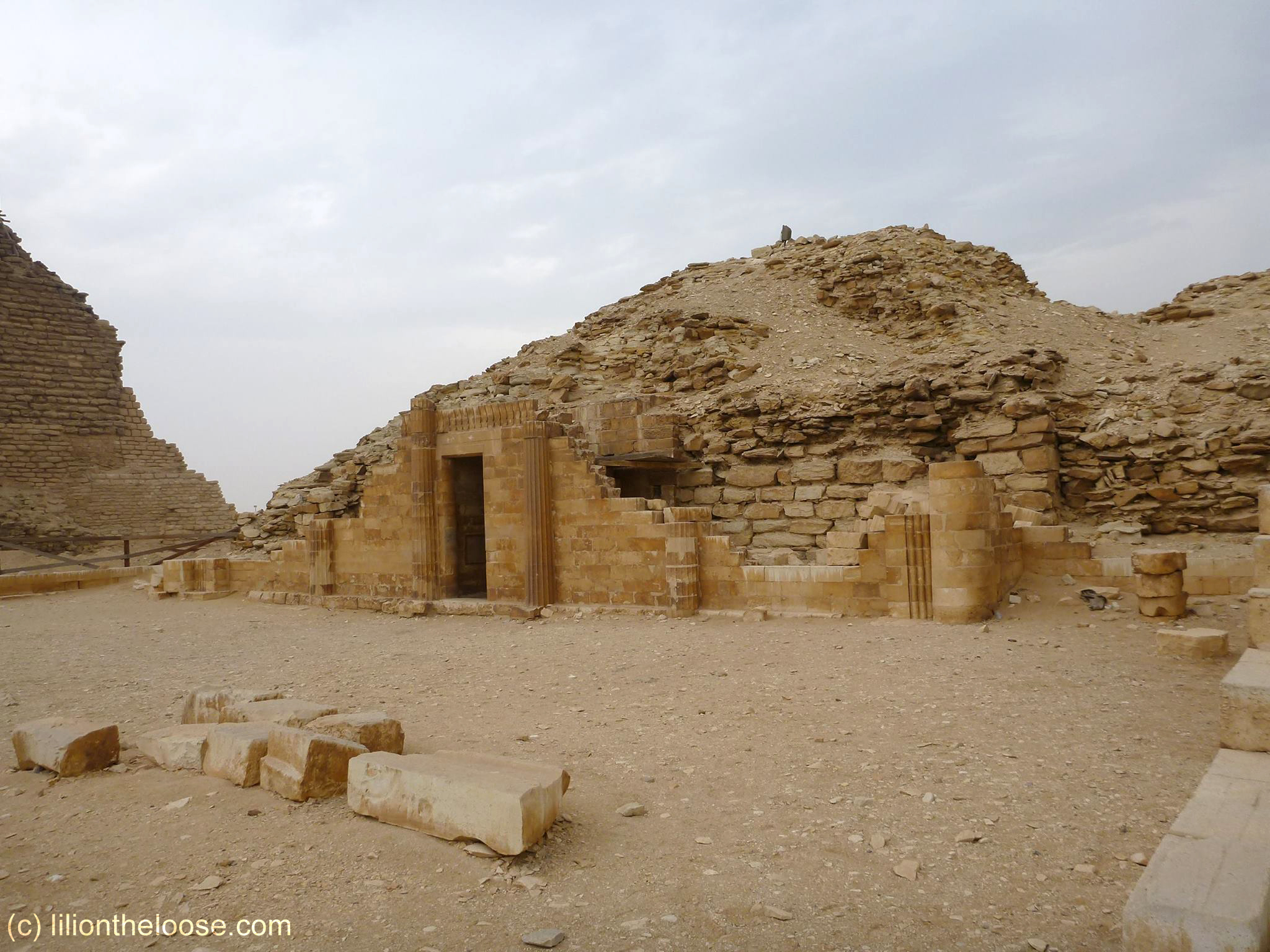
House of the South
After quickly wandering around “Temple T” next to the Great Court, we walked up to the pavilions of the “House of the South” thinking it might be the museum, but a quick glance showed this wasn’t the “modern newly opened museum” that I was looking for. We then walked through the Heb-Sed Court, another ceremonial part of Djoser’s funerary complex. These types of buildings were nothing like I expected tombs and buildings to look like. I just hadn’t expected things to be popping out of the ground or even be free standing, exposed to the elements like many of the ruins I saw at Saqqara.

Heb-Sed Court with the Step Pyramid in the background.
We then took some photos of each other and then it was back to the car.

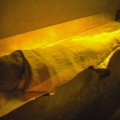

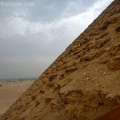
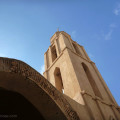

I really enjoyed reading about your day in Sakkara.